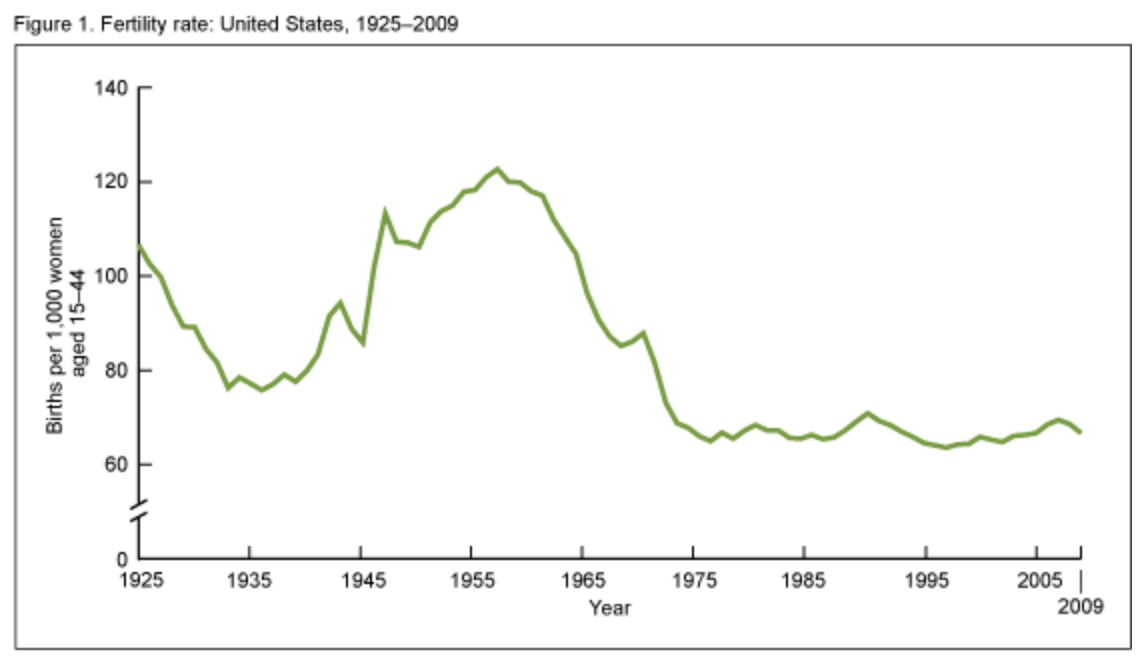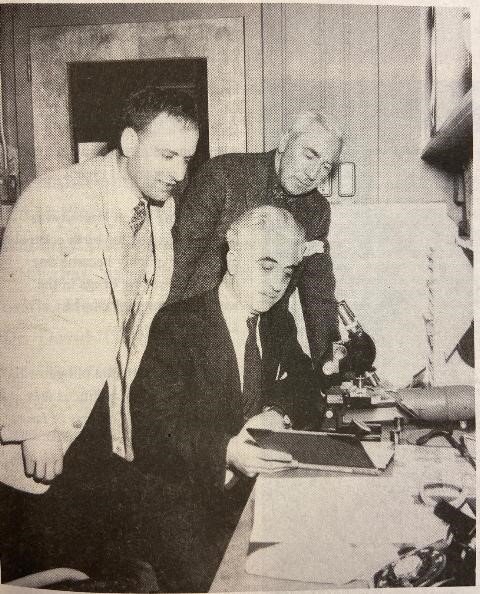
Fertility Rate in America, 1925-2009. Courtesy of the CDC.
While some early contraception advocates valued its role in population control, others emphasized its ability to provide women reproductive autonomy. Still others pointed to the need for a safer contraceptive method to decrease maternal mortality rates.

Fertility Rate in America, 1925-2009. Courtesy of the CDC.

Maternal Mortality Rate, 1900-1997. Courtesy of the CDC.
In the early 1900s, activists sought alternatives to existing contraceptives like rubber condoms, which required male participation. There were few effective methods of contraception that gave women complete reproductive autonomy. Without safe contraception, the risk of unwanted pregnancy and subsequent deaths during childbirth increased severely.

Dr. Pincus consulting Dr. Rock and Celso-Ramon Garcia during trials. of the Pill, 1957. From The Birth of the Pill by Jonathan Eig.
Margaret Sanger fought tirelessly for widespread access to effective contraception. In 1950, Sanger challenged Dr. Gregory Pincus, a scientist who studied reproductive physiology, to create a hormonal contraceptive.
Eventually, Katharine McCormick, a contraception advocate and friend of Sanger, donated heavily to Pincus’s work. She also financed the research of Dr. John Rock, a scientist who conducted clinical trials of progesterone and made promising discoveries.
"I still feel, as I have felt from the first, that there is nothing more important than birth control [...] I have wanted very much to assist financially in this contest more than it is possible for me to do at present."
- Katharine McCormick, in a letter to Margaret Sanger, 1948.